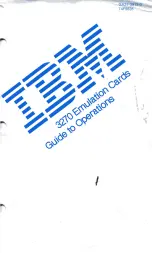
1-4
2) As the source-side RP, RP 1 creates SA messages and periodically sends the SA messages to its
MSDP peer. An SA message contains the source address (S), the multicast group address (G),
and the address of the RP which has created this SA message (namely RP 1).
3) On MSDP peers, each SA message is subject to a reverse path forwarding (RPF) check and
multicast policy–based filtering, so that only SA messages that have arrived along the correct path
and passed the filtering are received and forwarded. This avoids delivery loops of SA messages. In
addition, you can configure MSDP peers into an MSDP mesh group so as to avoid flooding of SA
messages between MSDP peers.
4) SA messages are forwarded from one MSDP peer to another, and finally the information of the
multicast source traverses all PIM-SM domains with MSDP peers (PIM-SM 2 and PIM-SM 3 in this
example).
5) Upon receiving the SA message create by RP 1, RP 2 in PIM-SM 2 checks whether there are any
receivers for the multicast group in the domain.
z
If so, the RPT for the multicast group G is maintained between RP 2 and the receivers. RP 2
creates an (S, G) entry, and sends an (S, G) join message hop by hop towards DR 1 at the
multicast source side, so that it can directly join the SPT rooted at the source over other PIM-SM
domains. Then, the multicast data can flow along the SPT to RP 2 and is forwarded by RP 2 to the
receivers along the RPT. Upon receiving the multicast traffic, the DR at the receiver side (DR 2)
decides whether to initiate an RPT-to-SPT switchover process.
z
If no receivers for the group exist in the domain, RP 2 does not create an (S, G) entry and does join
the SPT rooted at the source.
z
An MSDP mesh group refers to a group of MSDP peers that have MSDP peering relationships
among one another and share the same group name.
z
When using MSDP for inter-domain multicasting, once an RP receives information form a multicast
source, it no longer relies on RPs in other PIM-SM domains. The receivers can override the RPs in
other domains and directly join the multicast source-based SPT.
RPF check rules for SA messages
As shown in
Figure 1-3
, there are five autonomous systems in the network, AS 1 through AS 5, with IGP
enabled on routers within each AS and BGP or MBGP as the interoperation protocol among different
ASs. Each AS contains at least one PIM-SM domain and each PIM-SM domain contains one ore more
RPs. MSDP peering relationships have been established among different RPs. RP 3, RP 4 and RP 5
are in an MSDP mesh group. On RP 7, RP 6 is configured as its static RPF peer.
Summary of Contents for S7902E
Page 82: ...1 4 DeviceA interface tunnel 1 DeviceA Tunnel1 service loopback group 1 ...
Page 200: ...1 11 DeviceB display vlan dynamic No dynamic vlans exist ...
Page 598: ...ii ...
Page 1757: ...4 9 ...
Page 1770: ...6 4 ...
Page 2017: ...2 11 Figure 2 3 SFTP client interface ...
Page 2238: ...1 16 DeviceA cfd linktrace service instance 1 mep 1001 target mep 4002 ...
















































